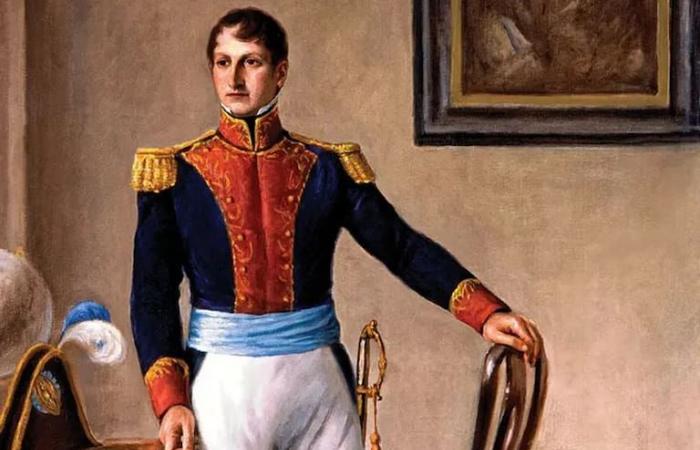Hear
This Thursday, June 20, is a holiday because it is the Flag Dayand it doesn’t hurt to review who was Manuel Belgrano for childrenmany of whom take the oath around this time to the national standard of which the hero was the creator.
Furthermore, the effigy of Belgrano It is even present on the banknotes, and its name baptizes schools, works and even soccer teams in the country, so it is common for the little ones to have doubts about this unavoidable figure of our national history. And it doesn’t hurt for parents, many of whom learned what they know about him at school, to review the historical sources about him.
The hero who went down in history as the creator of the national flag He had many facets in addition to this transcendental fact: he was a lawyer, a soldier, a thinker and one of the architects of national independence in times when Argentina was still a territory within the Viceroyalty of the Río de la Platawhich in turn contained other current countries such as Bolivia, Paraguay, Uruguay and part of Brazil.
Buenos Aires It was the capital of this colonial subdivision of the Spanish Empire, and Belgrano was born there in 1770. After attending school at the traditional Colegio Real San Carlos, he migrated to Spain, where he studied at the Universities of Valladolid and Salamanca. At that time, the revolutions in the United States and France They agitated the ideas of liberation of peoples subjected to monarchies or colonial orders.
With these types of concepts fully absorbed, Belgrano crossed the Atlantic Ocean to return to his hometown in 1794, already with the title of lawyer and the appointment as First Secretary of the Consulate in these latitudes. From this position, intended to control and promote the economic activities of the colony, he sought to influence the industrial policies of the region.
That position would accompany him for more than 10 years, until July 1806, “making impotent efforts in favor of the public good; Well, they were all either in the Government of Buenos Aires or in the Court, or among the merchants themselves, individuals who made up this body, for whom there was no more reason, no more justice, no more usefulness, no more need than their commercial interest. ”, as he tells in his autobiography.
His life was shaken with the first english invasion, which occurred on June 25, 1806. After refusing to take the oath for the British flag and fighting in the resistance, he escaped to Mercedes, where he learned of the reconquest of the city by Liniers’ troops. Upon his return, he learned the military rudiments that would help him fight in the second english invasion, the following year, and in his subsequent campaigns. Since then, the conviction that The people of these lands could become independent from European powers I would never abandon him.
The presence of Belgrano was essential for the formation of the First National Government Board, of which he was a member. It occurred in the context of the Napoleonic invasion of Spain, which beheaded the monarchy of that country and gave local patriots the opportunity to seek autonomous administration in the face of a power vacuum. To report on the changes produced in the viceregal capital, Belgrano was sent to Paraguay.
Later he would carry out the military tasks for which he is most remembered: in 1811 he was appointed head of the Patricios Regiment, and with this military corps he raised the flag for the first time. National flag, on February 27, 1812, on the banks of the Paraná. The solemn ceremony took place during the inauguration of two artillery batteries that had been installed on that coast to avoid enemy attacks.
Belgrano’s idea of designing a flag It was preceded by placing a badge that would identify the Creole soldiers of the royalist troops, since at that time both bodies used red banners. This concern was raised by the hero to the Triumvirate of Buenos Aires, which authorized him to create a new emblem. For this, it was taken as a reference the blue and white cockadewhich the hero had already seen during the days of the May revolution.
Shortly after he was appointed head of the Northern Army, and starred in the second aid campaign to Upper Peru, a territory that included what is now Bolivia. There he decided on the strategic withdrawal of civilians towards Tucumán, which was baptized as Jujuy Exodus, a scorched earth strategy whose purpose was to wear down royalist troops. In that campaign he also suffered tough defeats in Vilcapugio and Ayohuma which, added to the growing fragility of his health, led him to have to excuse himself from his position.
In 1816 He was part of the Congress of Tucumán that signed the Act of Independence, and where its design for the national flag was made official. Two years later he was reinstated as general of the Northern Army, but the development of his illness forced him to decline the honor. He died two years later, on June 20, 1820, as a result of his health deteriorating, on a day that is National holiday because it is the Flag Day.
THE NATION






